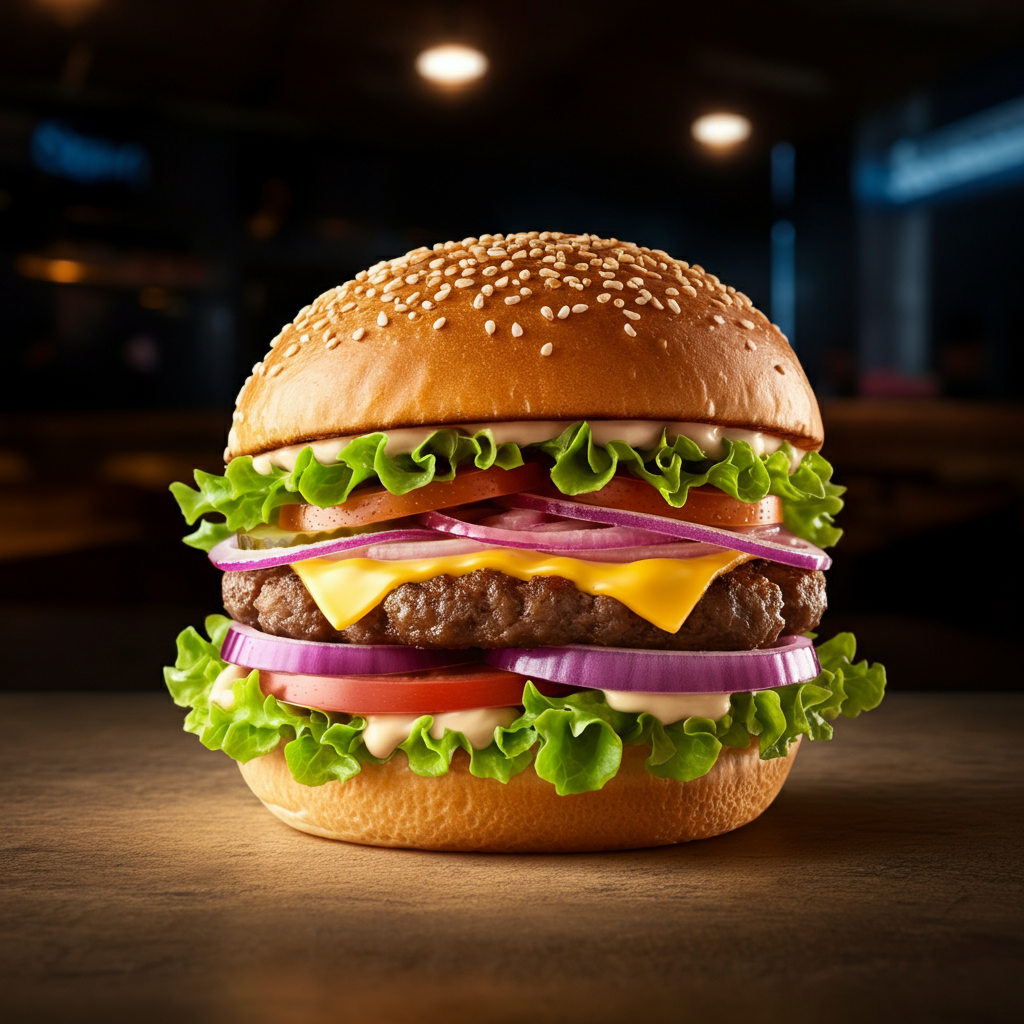Bicky Burger
Belgium
A popular Belgian fast food burger.

Origins and History
While precise origins are difficult to pinpoint, the Bicky Burger's story is deeply intertwined with the evolution of fast food in Belgium. It emerged in the latter half of the 20th century, likely gaining popularity alongside the rise of quick-service restaurants and a growing demand for convenient, affordable meals. Unlike some burgers with centuries-old roots, the Bicky Burger's history is relatively recent, reflecting a specific moment in Belgian culinary and social change. Its widespread adoption suggests a successful adaptation to the tastes and preferences of Belgian consumers. The exact date and creator remain somewhat shrouded in mystery, adding to its intriguing narrative.
Cultural Significance
The Bicky Burger holds a significant place in Belgian popular culture, representing a quintessential element of the country's fast-food landscape. It's a recognizable and widely enjoyed dish, often associated with casual outings, family meals, and everyday convenience. Its presence in numerous restaurants and food stalls across the country underscores its integral role in the nation's culinary identity, providing a readily available and affordable food option for people from all walks of life. The Bicky Burger’s success speaks volumes about its adaptation to Belgian society and its place within the country’s broader food culture.
Traditional Preparation
The traditional Bicky Burger typically features a grilled beef patty, nestled within a soft sesame seed bun. Accompanying the patty are various key ingredients: a generous helping of Bicky sauce (a special recipe often described as a tangy, slightly sweet blend of mayonnaise and spices), crisp lettuce, sliced tomatoes, and onions. The precise composition of the Bicky sauce remains a closely guarded secret, contributing to the burger's unique flavor profile. This simple yet satisfying combination represents the essence of the classic Bicky Burger experience.
Regional Variations
While the core components of the Bicky Burger remain consistent across Belgium, minor regional variations may exist. Certain restaurants might use slightly different types of buns, or adjust the proportions of the various ingredients to suit local preferences. However, the fundamental elements – the beef patty, Bicky sauce, lettuce, tomato, and onion – generally define the burger across the country. These subtle differences often reflect local culinary traditions or simply the unique style of individual establishments.
Modern Interpretations
In recent years, modern interpretations of the Bicky Burger have emerged, reflecting broader food trends and culinary innovation. Some restaurants experiment with gourmet variations, incorporating higher-quality ingredients, artisan buns, and creative sauce combinations. Vegetarian or vegan alternatives, featuring plant-based patties and modified sauces, are also becoming increasingly popular, allowing a wider audience to enjoy this beloved Belgian fast food classic in a way that aligns with their dietary choices. These modern twists demonstrate the enduring appeal of the Bicky Burger and its adaptability to contemporary culinary landscapes.